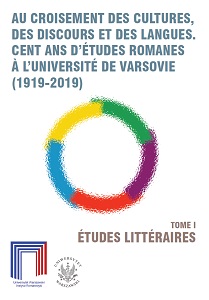
"Le Château noir, ou les Souffrances de la jeune Ophelle": entre Madame de Genlis et Mrs Radcliffe
The first part of the paper will focus on Anne-Jeanne-Félicité Mérard de Saint-Just’s two novels, "Mon journal d’un an, ou Mémoires de Mademoiselle de Rozadelle-Saint-Ophelle" (c. 1788) and "Démence de Madame de Panor, en son nom Rozadelle Saint-Ophèle" (1796). A special emphasis will be put on the possible literary influence of Madame de Genlis and her "Histoire de la duchesse de C***", particularly on the first of the two books. The motive of “folle d’amour”, clearly present in the second novel, will also be explored. Finally, the manner in which Mérard de Saint-Just, undoubtedly inspired by the popularity of the English Gothic fiction, reused these two texts while publishing her next novel, "Le Château noir, ou Les souffrances de la jeune Ophelle" (1798/1799), will be analyzed.
More...
